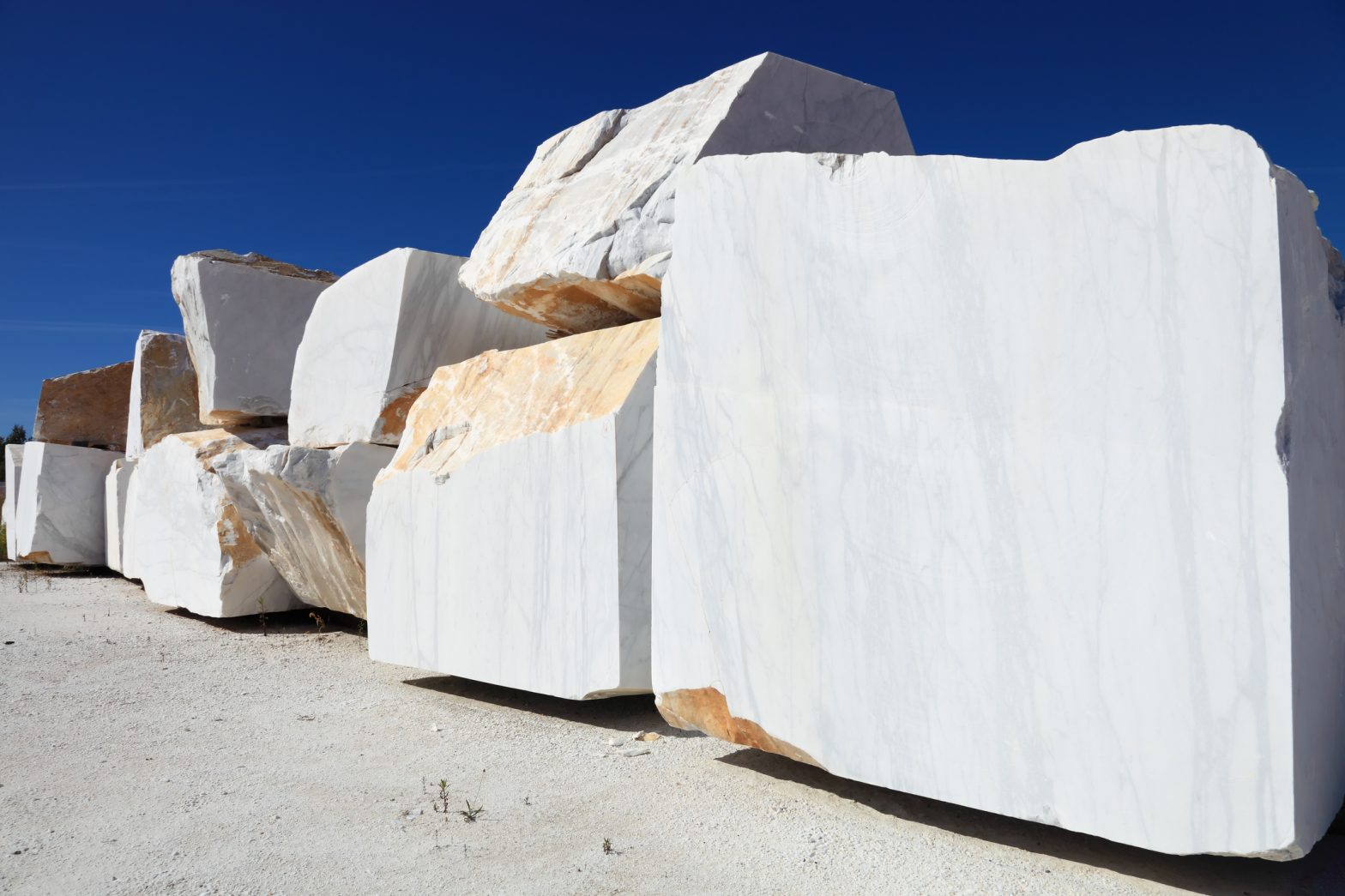
The granite goes through an extensive stone fabrication process to achieve the beautifully polished granite countertops that are a popular staple in many kitchen and bathroom remodels.
In some cases, these “birthmarks” make the stone beautiful, but occasionally you may find these marks unacceptable. This inspection allows the fabricator to find these characteristics and avoid them in the templating and fabrication process.
The stone will also go through a final inspection before templating to identify the areas that you have found unacceptable or areas that have characteristics more severe than normal. These areas are then marked to avoid using those areas during templating.
After the inspection is completed, the slabs are then laid out, and the templates are arranged on the stone to ensure the most pleasing appearance of color and vein texture. Our experts also arrange the templates to ensure the overall flow of the various countertop patterns is appropriate for the countertops in your layout.
Stone is cut with either a bridge saw or a water jet. While the bridge saw has always been a popular tool, the water jet has become a popular option and used in conjunction with a saw. The bridge saw is used to make straight cuts, whereas the water jet is used for more intricate patterns. Once we have cut your pieces from the slabs, we forward them to a CNC machine where they will be fabricated.
We will complete the cutouts for your cooktop, undermount sink, or faucet holes at this step in the process. Our skilled CNC Machine operator will program the machine to know the size of the stone or stones that are on the table. The machine is then programmed to know where the stones are located on the table and what needs to be done with each piece.
Every stone has different working characteristics, so we have an experienced CNC operator for the most accurate results. After our operator has cut the holes, the granite’s edge is shaped by the CNC machine prior to the final polish.
Granite is naturally water-resistant, but not completely. With one coat of sealer, we can increase the water-resistance on both the face of the stone and the edges. Sealer will not degrade in your kitchen or bathroom, but it is recommended that you reapply it within 10 – 15 years.
We will inspect the countertops to ensure that the edges are uniform around the stones. We will also view the stone from various angles to make that the color of the top of the stone and the edges match and that the light is bouncing off the edges in a uniform way.
Once we have completed this final inspection, your countertops are ready to install!